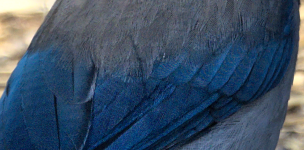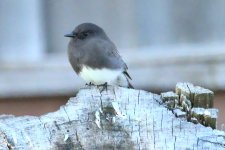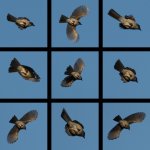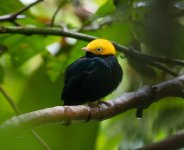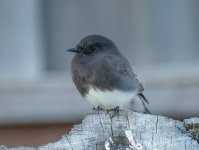MelospizaMelodiaFan
I photograph birds

I am making a list of expectations now, to be followed by observations of how things play out. I am currently using a Panasonic FZ150 point-and-shoot camera, the results of which you can see in my gallery. I have learned a lot about photography and post-processing with this camera. On a nice, clear day, it can create nice images. It is also very easy to use and carry.
On its way to me is a used Olympus E-M1 mark ii and Zuiko 100-400 f5-6.3. Here are the ways I hope it will improve upon the FZ150 with its 1/2.3" sensor.
On its way to me is a used Olympus E-M1 mark ii and Zuiko 100-400 f5-6.3. Here are the ways I hope it will improve upon the FZ150 with its 1/2.3" sensor.
- Image Quality - With the bridge camera, I can rarely resolve the fine hairs in the feathers of birds. I am hoping to consistently get this with good light and proximity to the subject. Also, if a subject is off-center, I expect its image to be sharper.
- High ISO performance - I limit my FZ150 to ISO400 because of noise. I am hoping to get similar results in M43 at 3200, perhaps pushing to 6400. This would allow me to shoot in lower light/cloudy days.
- Autofocus - My hopes are that phase-detection autofocus will make a big difference, especially for birds-in-flight. I am able to get small flying birds in the frame with my bridge camera, but they are rarely in focus.
- Pro capture - I am really looking forward to this. I have wasted many frames trying to anticipate the takeoff of a perched bird, so I hope those days are over with pro capture. Maybe I can get lucky and capture a predator strike on a stationary subject someday.
- Weather sealing - I am normally a fair weather photographer, but this capability will tempt me to venture out when in inclement weather.
- IS - The lens IS of my 12 year old FZ is quite good; I have no issues shooting at 600 mm equivalent FOV. I just hope the new system can match that.
Last edited:





